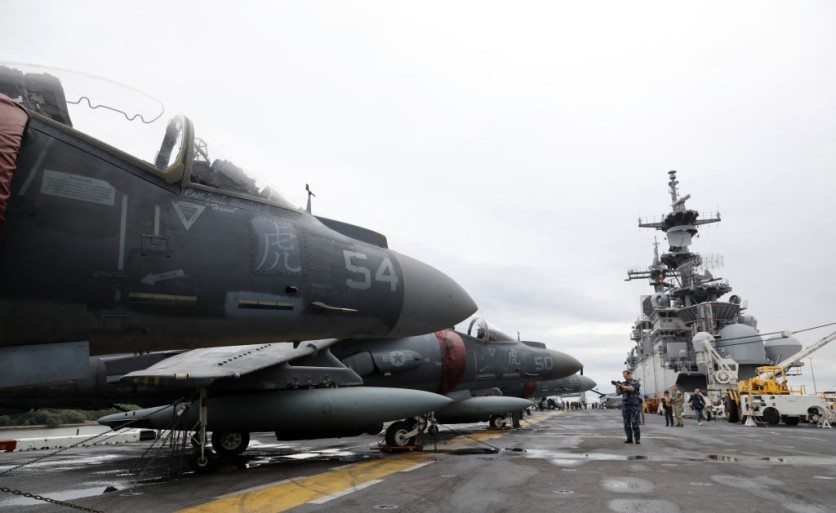A long-planned live fire exercise was participated in by American and Royal Navy aircraft from the 41 Test and Evaluation Squadron of the Royal Air Force (RAF), stationed at RAF Coningsby, according to an official news release from the RAF.
The attack took place during "Exercise Atlantic Thunder 22" from Sept. 1 to 12, with the major exercise, which included the SINKEX (abbreviation for sinking exercise), taking place on Sept. 7 in waters off the northwest coast of Scotland.
RAF said that it gave allies practical experience of hitting targets at sea from a distance and demonstrated the effectiveness of several advanced warfighting and targeting techniques. The effectiveness of naval and air forces was a rare live test of sophisticated weaponry against a realistic target thousands of miles away.

Read also : Iran Seizes Unmanned US Navy Vessels, Reveals Pentagon's Use of AI and Sea Drones in Patrolling Gulf Region
Atlantic Thunder 22
According to a statement released by the military, the UK Royal Navy took part in the US-led "Atlantic Thunder" for the first time in 18 years.
The same news release emphasized the RAF Typhoons' historic participation in a SINKEX, which was also rare in the Atlantic Ocean since exercises like this are mostly played out in the Pacific.
However, only one of the three Typhoons from the RAF's No. 41 Squadron could deliver weapons to the USS Boone. An RAF Typhoon dropped a live bomb, and it was the first time a decommissioned cruiser had been utilized as a maritime target, as noted by Interesting Engineering.
Three RAF Typhoon jets staged mock attacks on the target, the decommissioned frigate USS Boone (an Oliver Hazard Perry-class frigate).
The Royal Navy's HMS Westminster, a Wildcat chopper, a US P-8 Poseidon, F-15E Strike Eagles, and the USS Arleigh Burke also participated in the training ship assault, utilizing a variety of potent weapons.
Another first for the exercise was the use of a British Wildcat HMA2 helicopter mounted on the MX-15HDi electro-optical/infrared sensor turret of the 815 Naval Air Squadron to guide the 500-pound Paveway IV dual-mode bombs from the Typhoon to the target.
When this happened, the same Wildcat had just shot its own Martlet air-to-surface missiles. The helicopter shot at a cruiser at sea rather than carefully constructed targets.
However, according to Interesting Engineering, it is primarily designed against asymmetric targets, such as small, quick naval craft, vessels that serve as "suicide drones," and other unmanned surface ships that specifically operate in swarms.
In-depth preparations were made over a lengthy period to ensure the exercise was conducted in a safe and environmentally responsible manner, including the removal of hazardous substances and contaminants before the US ship could be used as a target in this way.
Related Article : US Navy's E-2D Advanced Hawkeye Will Serve as a Game-Changing 'Digital Quarterback' Aircraft for Military Missions
This article is owned by Tech Times
Written by Joaquin Victor Tacla
ⓒ 2025 TECHTIMES.com All rights reserved. Do not reproduce without permission.




